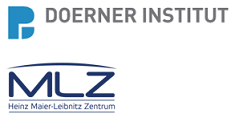Speaker
Description
The combined use of different neutron techniques has been employed for the non-destructive compositional investigation of Roman crucible fragments discovered during an excavation in Milan (Italy) conducted by the Soprintendenza Archeologica, Belle Arti e Paesaggio of Milan in 2009.
The excavation unearthed numerous fragments of metals and crucibles related to bronze and brass production, datable between the end of I and the beginning of II century CE and which may constitute the first evidence of brass production in Italy during the Roman Empire [1,2]. So far, historical documentation of brass production in the Roman Empire [3] has only been found in England, Germany, and France [4-6].
Several crucible fragments do not show any metallic traces on their surface; therefore, standard investigations with X-rays or ion beams could not be adequately sufficient to disclose brass traces and composition. In the context of a non-destructive characterisation, the crucible samples have been analysed using thermal and epithermal neutrons to determine and quantify their elemental and phase composition within the volume. Epithermal neutrons were employed to obtain elemental information through the resonance absorption techniques NRTI (Neutron Resonance Transmission Imaging) and NRCA (Neutron Resonance Capture Analysis) which are based on the measurements of transmitted neutrons and gamma radiation following neutron absorption reactions with the samples. Thermal neutron diffraction has been exploited to quantify the zinc content in the brass traces.
The combined use of these different neutron techniques, available at the INES beamline of the ISIS spallation source (UK), allowed for a comprehensive and non-destructive understanding of the composition of the metallic alloys present in the bulk of the crucibles. This approach takes advantage of the complementarity between thermal and epithermal neutrons to overcome the limitations of each technique, such as their different detection limits on specific elements (e.g., lead).
References:
[1] Ceresa Mori, A. Cucini, C. “Un’officina di bronzista e la produzione di ottone e di specchi a Mediolanum nel I-II sec. d.C.” in Cucini C (ed) Acta mineraria et Metallurgica. Studi in onore di Marco Tizzoni, Notizie Archeologiche Bergomensi, 2012, 20.
[2] Tizzoni, M. “Condensatori per la produzione dell'ossido di zinco da conca del Naviglio a Milano”, Notizie Archeologiche Bergomensi 1996, 4, 111-120.
[3] Bayley, J. “The production of brass in Antiquity with particular reference to Roman Britain” 1998, in Craddock PT (ed) 2000 Years of Zinc and Brass, 7-23, BMOP 50, London
[4] Bayley, J. et al “A Saxon brass bar ingot cache from Kingsway”, 2014, London. In Cotton, J., Hall, J., Keily, J., Sherris, R., and Stephenson, R. (eds), Hidden Histories and Records of Antiquity. Essays on Saxon and Medieval London for John Clark, Curator Emeritus, Museum of London. London: LAMAS, 121-28.
[5] Martinón-Torres, M. and Rehren, T. “Agricola and Zwickau: theory and practice of Renaissance brass production in SE Germany”, Historical Metallurgy, 2002, 36.
[6] Merkel, S. “Carolingian and Ottonian Brass Production in Westphalia. Evidence from the Crucibles and Slag of Dortmund and Soest”, Metalla Nr. 22.1, 21–39, 2016.

